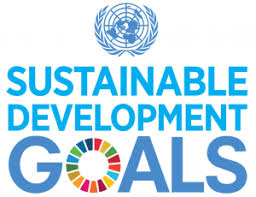Bhutan on track to achieving SDGs
Bhutan is on track in its implementation and investment in achieving the Sustainable Development Goals (SDGs) by 2030. More than 40 percent of the target has been achieved—in contrast to only 15 percent globally.
The year 2024 marks the mid-point for achieving the 2030 Agenda for Sustainable Development with only six-years left to work on it.
The world is severely off track to achieve the SDGs by 2030, with the world economy lacking dynamism and grappling with an array of risks and challenges.
According to a recent UN Development Programme (UNDP), Bhutan is leading in Goal 13, Climate Action. “The health and education indicators are also on a good track so far. However, the challenge persists in Zero Poverty—the issues of poverty, inequality, income gaps, and vulnerable population has posed hindrance in the progress,” the report stated.
Bhutan’s SDG index ranks 61 of the 166 countries.
Bhutan is vulnerable to natural disasters and the impact of climate change, investment in climate adaptation and mitigation can reduce risks and improve the resilience of people and the natural environment.
Even if Bhutan is on track towards Climate Action, the nation requires USD 0.385 billion for adaptation and USD 0.6 billion for mitigation initiatives in the short-term and an additional USD 6,484.8 million for long-term strategy, as per Nationally Determined Contributions (NCDs) of Bhutan.
The rising geopolitical tensions, climate disasters and a global cost-of-living crisis have hit billions of people, progress on healthcare, education, and other development targets.
Administrator of the UNDP, Achim Steiner, said that inadequate financing is one of the main impediments holding back progress of the SDGs.
“To make meaningful progress on the SDGs, including on climate mitigation and adaptation, it is estimated that emerging markets and developing economies will need to increase annual spending by at least USD 3 trillion by 2030,” he said. “Six years left until we have ‘spent’ the remaining 1.5°C degree budget.”
Problems
Globally, around half of the 140 SDG targets for which sufficient data is available deviate from the required path.
Bhutan experienced over 32 extreme weather events between 2016 and 2022, including flash floods, landslides, snowfall, and pre-and post-monsoon disturbances claiming lives and destroying crops and properties.
The country has 567 glaciers covering 55.04Km square—of which, 17 are potentially dangerous. Moreover, Bhutan is losing billion litres of glacial water annually.
Bhutan along with many other countries are faced with tight fiscal constraints and high risks of debt distress, with the median debt burden rising from 3.1 percent of revenue in 2010 to 12 percent in 2023—the highest level since 2000.
Progress is woefully insufficient on SDG 13, climate action. While climate finance has grown over time, the commitment of USD 100 billion climate finance annually as agreed during the fifteenth Conference of Parties (COP15) and confirmed at COP21 is yet to be met.
While global climate data is available, inadequate data on a national level obstructs decision-making. Bhutan does not have year-on-year data for comparison, relevant policy interventions and investments—affecting the SDG financing.
SDG Financing
The Asian Development Bank (ADB) projected 4.4 percent growth this year and 7 percent next year for Bhutan allowing a better approach in SDG financing.
Fiscal systems and regulatory policies matter for climate action to subsidize emissions of change-inducing pollutants or incentivize climate change mitigation and adaptation.
A UN report launched recently titled, “The 2024 Financing for SDG report: Financing for Development at a Crossroads (FSDR 2024)” calls for urgent actions needed to mobilise financing to close the development financing gap.
“An annual estimate of USD 4.2 trillion annually, up from USD 2.5 trillion pre-pandemic,” the report stated.
While emissions reduction targets under the Paris Agreement as of 2023 would lead to an 11 percent decrease in GHG emissions, substantial financing—trillions of dollars annually until 2050 is required to achieve this goal.
Hereafter
The UN Summit of the Future and International Conference on Financing for Development planned between June 30 and July 3 next year is a crucial opportunity to change course. The summit where Bhutan, as one of the low middle-income countries will participate will discuss on closing credibility gaps and rebuild trust in multilateralism; finance and investment gaps, and formulate new development pathways.
Supporting SDG financing across the world, a report titled ‘A governance framework for climate-relevant public investment management 2024,’ launched recently stated that policymakers need to consider how to determine actions based on risk levels and decision dynamics.
In Asia-Pacific region, ADB estimates the region needs to invest about USD 26.2 trillion between 2016 and 2030 if countries are to restore economic growth momentum to pre-covid levels, eliminate poverty, and invest in climate-resilient infrastructures.
In 2022, the ADB mobilized USD 7.1 billion to climate finance, including USD 4.3 billion in climate change mitigation finance and USD 2.8 billion for climate change adaptation.
Asia and the Pacific regions are facing more frequent and wide-ranging climate-related challenges than most other regions. “For instance, over 40 percent of global climate-related disasters have occurred in the region since the start of the 21st century, affecting nearly 3.6 billion people and causing almost 0.9 million deaths.”
Source: kuenselonline.com




